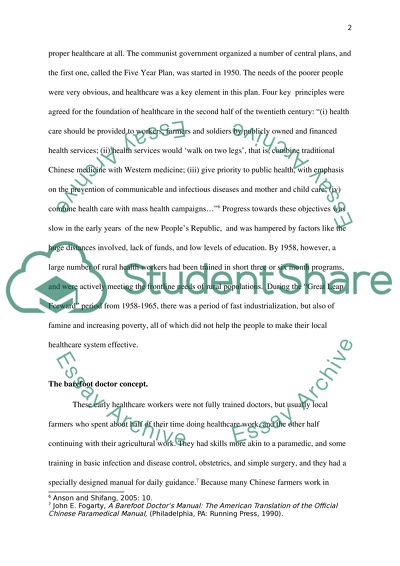Cite this document
(“China's healthcare: from barefoot doctors to current health system Research Paper”, n.d.)
Retrieved from https://studentshare.org/family-consumer-science/1423635-china-s-healthcare-from-barefoot-doctors-to
Retrieved from https://studentshare.org/family-consumer-science/1423635-china-s-healthcare-from-barefoot-doctors-to
(China's Healthcare: From Barefoot Doctors to Current Health System Research Paper)
https://studentshare.org/family-consumer-science/1423635-china-s-healthcare-from-barefoot-doctors-to.
https://studentshare.org/family-consumer-science/1423635-china-s-healthcare-from-barefoot-doctors-to.
“China's Healthcare: From Barefoot Doctors to Current Health System Research Paper”, n.d. https://studentshare.org/family-consumer-science/1423635-china-s-healthcare-from-barefoot-doctors-to.


